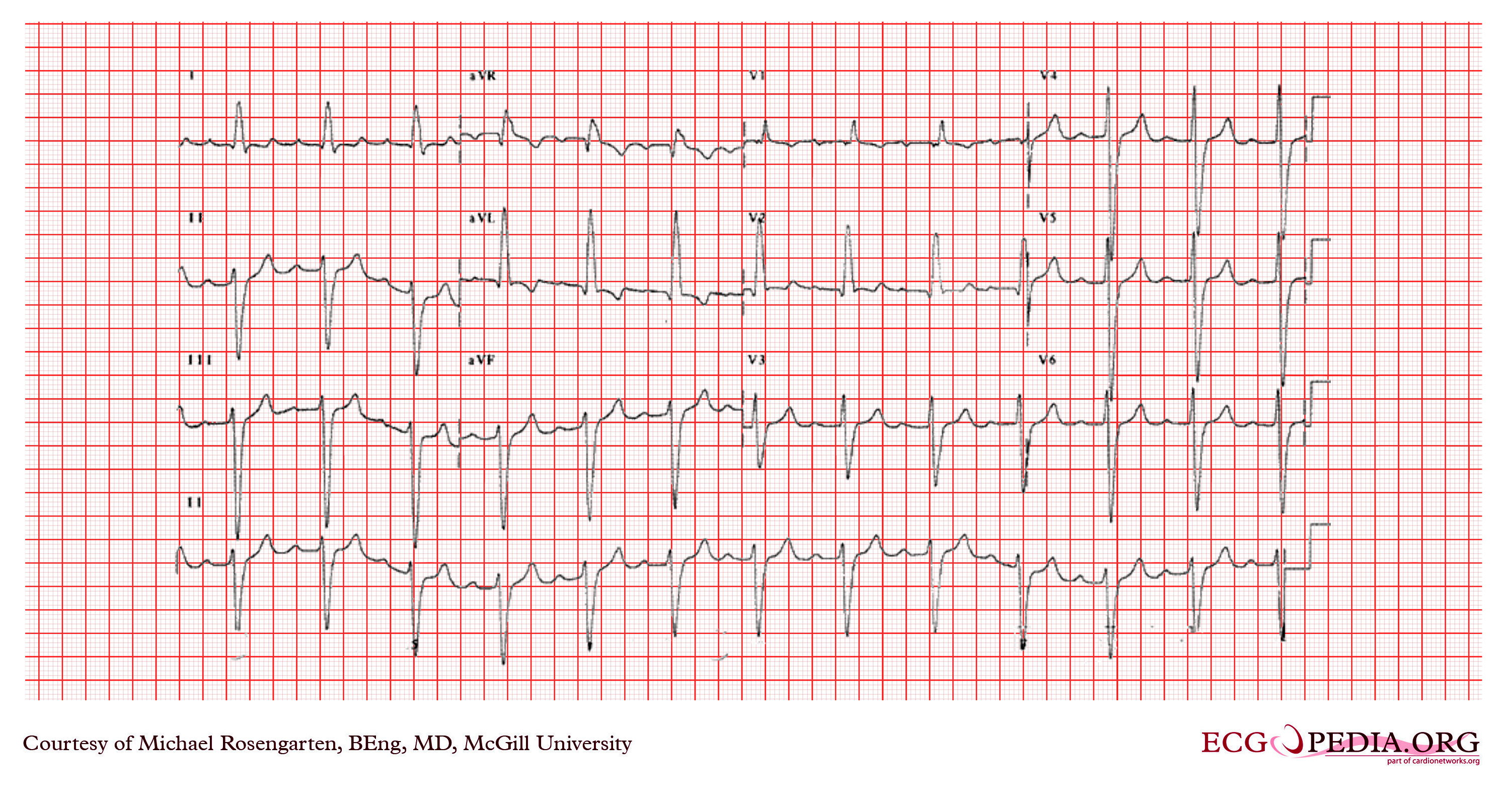Trifascicular block
Template:DiseaseDisorder infobox
Editor-In-Chief: C. Michael Gibson, M.S., M.D. [1]; Associate Editor(s)-in-Chief: Cafer Zorkun, M.D., Ph.D. [2]
Overview
The His-Purkinje system is a trifascicular system, with bifascicular block referring to conduction delay within either both the right bundle and left anterior or posterior fascicle or the left bundle branch in itself. Trifascicular block refers to first degree AV block, right bundle branch block, and left anterior hemiblock
Differentiating Trifascicular block from other Diseases
Trifascicular block is important to diagnose because it is difficult to tell based on the surface ECG whether the prolonged PR interval is due to disease in the AV node or due to diffuse distal conduction system disease.
- In the former case, if the block at the AV node level becomes complete, the escape rhythm will originate from the bundle of His, which typically will generate heart rates in the 40s, allowing the individual to survive and complain of symptoms of fatigue or near-syncope to their physician.
- In the later case, however, because the conduction system disease is diffuse in nature, the escape rhythm may be fascicular or ventricular, which may be at rates that are life-threateningly low.
Diagnosis
Electrocardiogram
Trifascicular block is a problem with the electrical conduction of the heart. It is diagnosed on an electrocardiogram (ECG/EKG) and has three features: [1]
- Prolongation of the PR interval (first degree AV block)
- Right bundle branch block
- Either left anterior fascicular block or left posterior fascicular block
Alternatively, trifascicular block is suggested by alternating right bundle branch block and left bundle branch block.
EKG Examples
Shown below is an EKG showing a sinus rhythm of 74 beats per minute with a prolonged PR interval of 288 milliseconds, an RSR complex in V1 compatible with a right bundle branch block and a QRS axis of minus 83 degrees compatible with a left anterior hemiblock indicating a trifasicular block.

Copyleft images obtained courtesy of ECGpedia, http://en.ecgpedia.org
Shown below is an EKG showing a regular rhythm of 70 beats per minute with left axis deviation and a dominant R wave in V1. The PR interval is 260 ms indicating a trifascicular block.

Copyleft images obtained courtesy of ECGpedia, http://en.ecgpedia.org
Shown below is an EKG demonstrating PR prolongation, left axis deviation and right bundle branch block in the right precordial leads suggesting a trifascicular block.

Copyleft images obtained courtesy of ECGpedia, http://en.ecgpedia.org
Electrophysiologic Study
The diagnosis of whether the PR prolongation is due to AV nodal disease or diffuse conduction system disease is typically made by an electrophysiologic study of the conduction system. In an electrophysiologic study, trifascicular block due to AV nodal disease is represented by a prolonged AH interval (denoting prolonged time from impulse generation in the atria and conduction to the bundle of His) with a relatively preserved HV interval (denoting normal conduction from the bundle of His to the ventricles). Trifascicular block due to distal conduction system disease is represented by a normal AH interval and a prolonged HV interval.
Treatment
Surgery
The treatment for diffuse distal conduction system disease is insertion of a pacemaker. If the PR prolongation is due to AV nodal disease, a case may be made for observation, as it may never progress to complete heart block with life threateningly low heart rates.
Regardless of where in the conduction system the block is, if the block is believed to be the cause of syncope in an individual, a pacemaker is an appropriate treatment.
References
External Links
- National Heart, Lung, and Blood Institute, Diseases and Conditions Index
- EKG Interpretations in infants and children